DIGITAL WILD / TKM Gråmølna
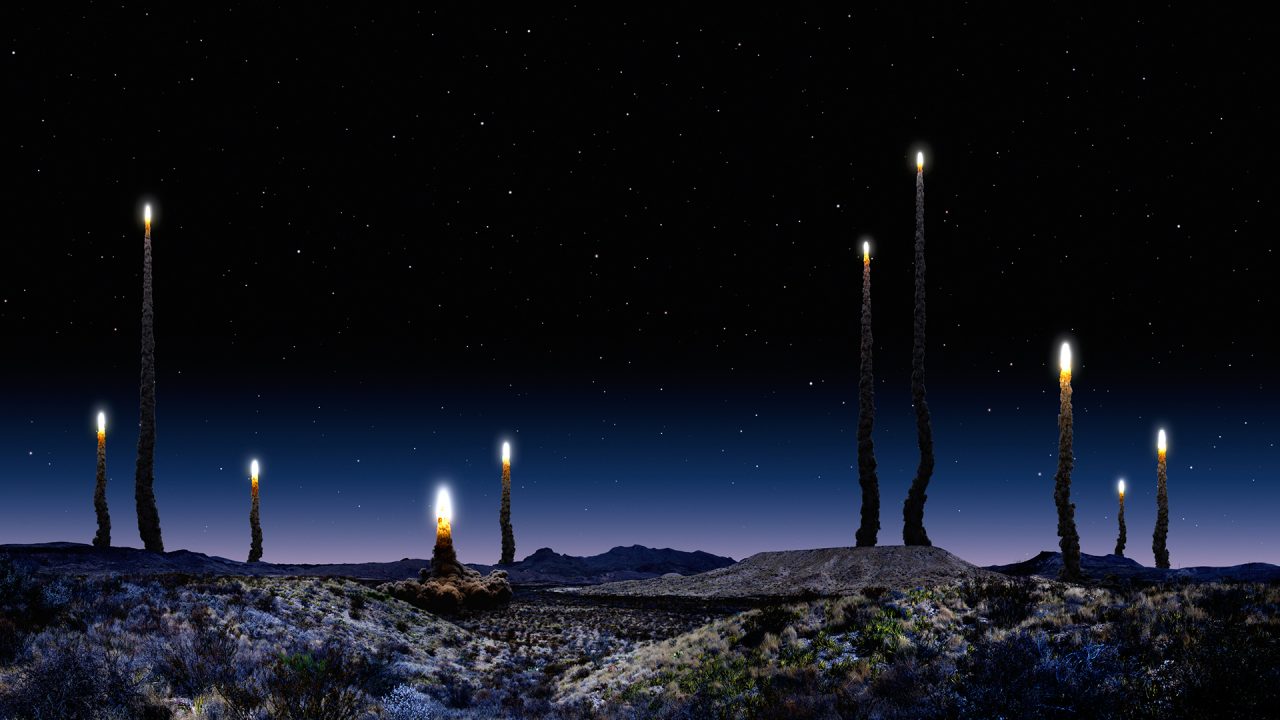
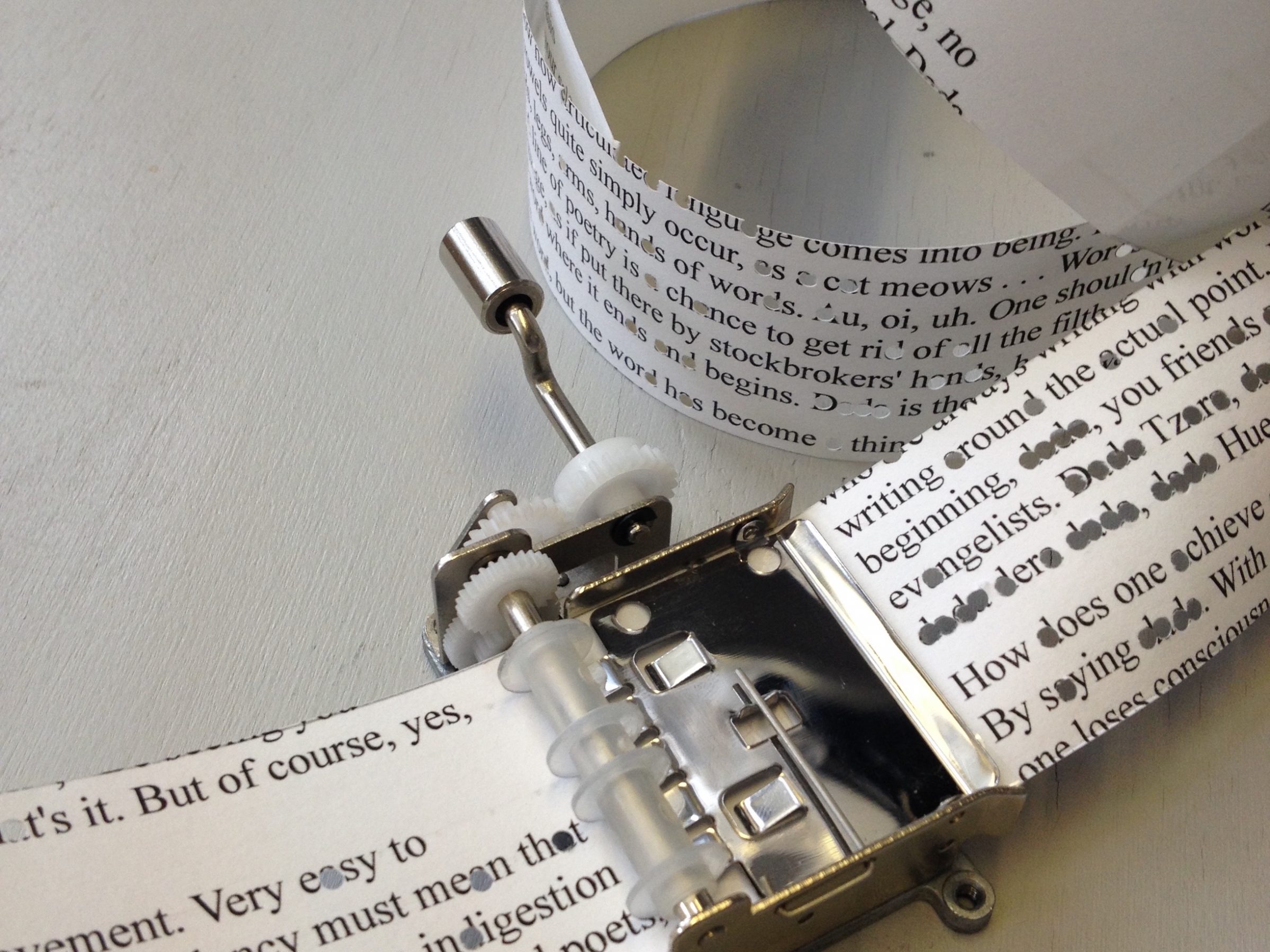
SOLO EXHIBITION, WORKSHOP / KUNSTMUSEET NORD-TRØNDELAG
March 6 – 14, 2020 – Opening @ 13:00 / Curator: Sara Cornelia Greiff
CECILIE B. JORDHEIM [no]
DADA MANIFESTO
The gramophone record, the musical thought, the score, the waves of sound, all stand to one another in that pictorial internal relation, which holds between language and the world. To all of them the logical structure is common. (Wittgenstein, 1999: 32)
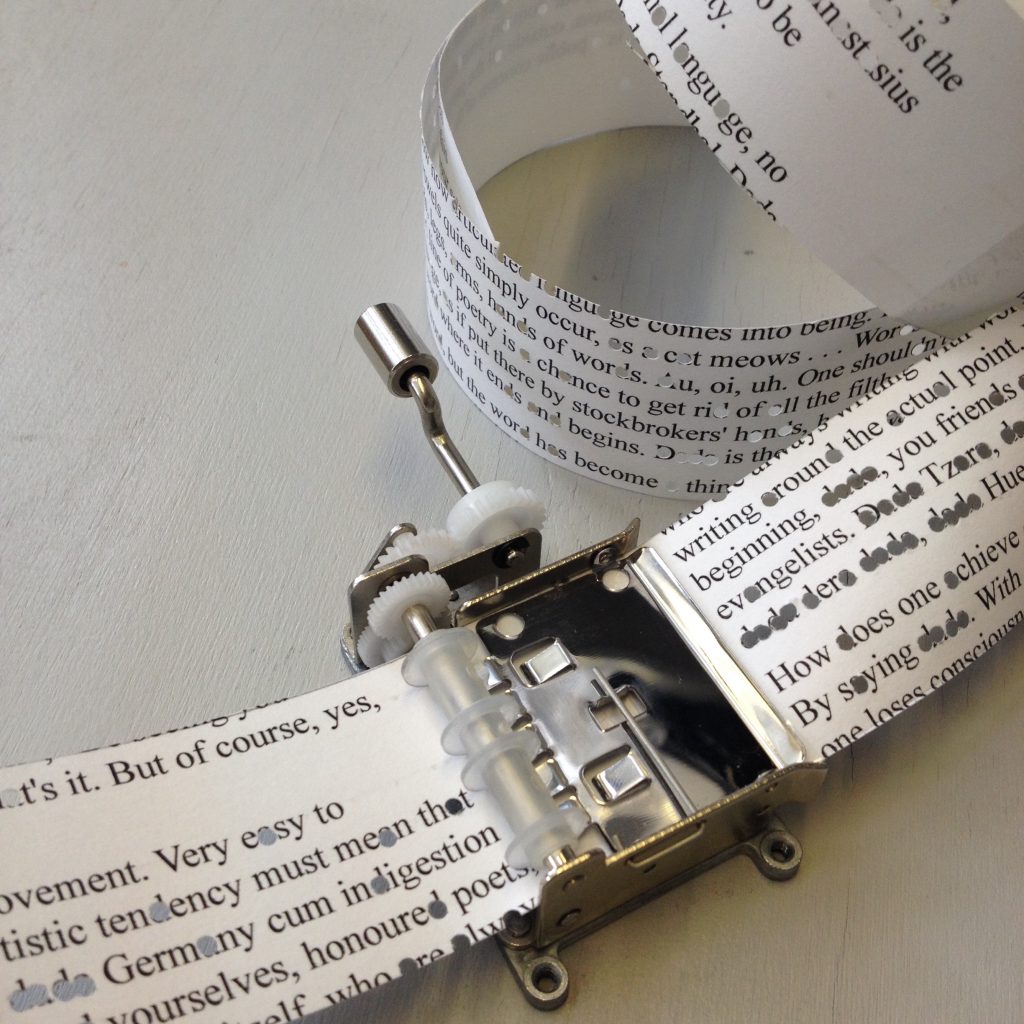
Dada Manifesto / Text on paper, music boxes, performance / Music box (10 x 6 cm), sound duration: 2-28 min / Year of production: (2015) 2019
Dada Manifesto (2015) is a sound piece for music boxes of 8 dada manifesto from the period 1916 to 1921 by Hugo Ball, Tristan Tzara, Francis Picabia, Raoul Hausmann and others. The manifesto, the text, on one or several A4-pages, is cut into one long strip to fit a music box and then spliced with tape. The letters D and A in the text are then punctuated, so the absence of D and A (..DADA), is what you hear being played.
During Meta.Morf, the Dada Manifesto will be shown in an expanded form at Art Museum Nord- Trøndelag: In addition to the soundwork of the Dadaists manifesto from the early 1900s, they will, after a 100 years, be in the company of soundwork and a performance produced in col- laboration with students from music, dance and drama at Olav Duun High School, Namsos.
Manifesting is about making something clear or obvious; forming a manifesto is about making visible and public what is important to oneself.
Dada was the first conceptual art movement where artists did not create aesthetically pleasing objects. The manifestos that originated in the Dada movement challenged bourgeois conven- tions and posed, and generated, challenging questions about society, the artist’s role and the meaning of the art.
The first dada manifesto by Hugo Ball, from 1916, encourages poets to stop writing with words, but rather write the word itself. Ball states that “I shall be reading poems that are meant to dispense with conventional language, no less, and to have done with it”. In this way, the collection of Dada manifestos in Dada Manifesto (2015) acts in accordance with Ball’s manifesto, using the word construct as the direct source.
Dadaist and artist Hans Arp wanted to incorpo- rate chance operations into the creation of art, in opposition to traditional art production where a work is carefully planned and completed. The introduction of coincidences was a way for Dadaists to challenge artistic norms and to ques- tion the artist’s role in the artistic process.
Just like the Dada movement emerged as a reac- tion to World War I, we see an anti-authoritarian wave across the world today questioning current norms and conventions. In particular, we see this in the younger generation in issues related to sustainability and climate change.
Students are invited to participate to the conver- sation with issues, big or small, that concerns them, and to communicate their views. The students’ statements then becomes a composi- tion, manifested on the paper strips to be played by the music boxes. The composition will provide the basis for an interpretation from the dance students, while the performance structure is based on chance operations.
The manifests from the High School students will be displayed as part of the exhibition, together with the original Dada Manifesto (2015) and the art pieces from the Kids’ Art Workshop that takes place Saturday, March 7.
The audience is also invited to participate actively and contribute to the exhibition by making their own compositions on paper strips to be included in the exhibition. This closeness to the audience and the participation of the spectator is pervasive in the art of Cecilie Bjørgås Jordheim, as well as highlighting relevant social issues.
Dada Manifesto has previously been shown and performed at Sound Of A Cage, Tou Scene (Stavanger, Norway), Malmö Konsthall (Malmö, Sweden) and represented by the Oslo-based pub- lishing house Santolarosa during the Artissima 2019 art fair (Turin, Italy). Published on Twitter, in para · text # 2 (London, UK) and in COLDFRONT Magazine (New York / www).
soundcloud.com/cbjordheim/sets/dada-manifesto
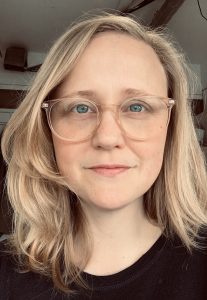 Cecilie Bjørgås Jordheim (b. 1981 in Bergen, Norway) is a visual artist, conceptu- al poet and composer currently working with the translation between visual and auditive systems, concrete poetry and the concept of isomorphia.
Cecilie Bjørgås Jordheim (b. 1981 in Bergen, Norway) is a visual artist, conceptu- al poet and composer currently working with the translation between visual and auditive systems, concrete poetry and the concept of isomorphia.
Through installations, visual scores and concrete poetry, Jordheim’s work springs from an inter- disiplinary agenda; between genres, fields of art and medium, and the thesis that all visual has sound. Jordheim thematizes the human need for systematization and questions if there a direct connection between language and the world; topography, typography, text, architecture and sound/music. The scores are often frame work for a collaboration with musicians, where the outcome is in the translation between the visual and the musical improvisation.
Jordheim holds an MA in fine art from Oslo National Academy of Arts (2011). Previous shows, screenings and publications include Geopoetics in Practice for Routledge publishing, Artissima and Gallery Santolarosa (Turin, Italy), Hayward publishing and Whitechapel Gallery (London, UK), Kunstmuseet Nord-Trøndelag (Namsos, Norway), Signal (Malmö, Sweden), Matrix Magazine (Montreal, Canada), Alpineum Produzentengalerie (Luzern, Switzerland), Bury Art Museum (Bury, UK) and UBUweb. Jordheim lives and works in Oslo, Norway.
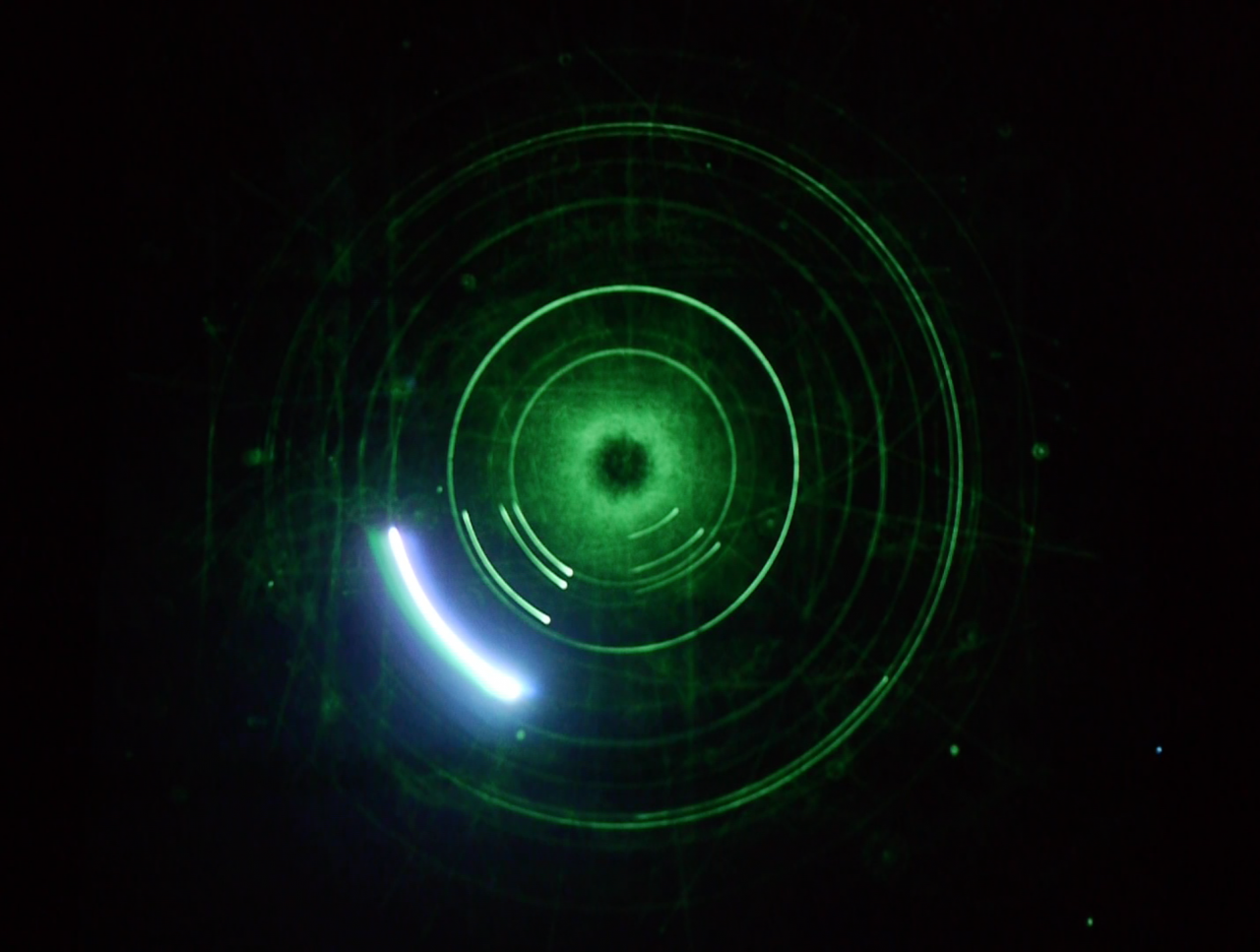
SOLO EXHIBITION / TRØNDELAG SENTER FOR SAMTIDSKUNST, March 6 – 28, 2020
Curators: Lars Skjelbreia, Tovelise Røkke-Olsen, Randi Martine Brockmann
Live performance: March 6 @ 18:30 / Artist talk: March 28 @ 14:00.
HC GILJE [no]
MELLOMROM
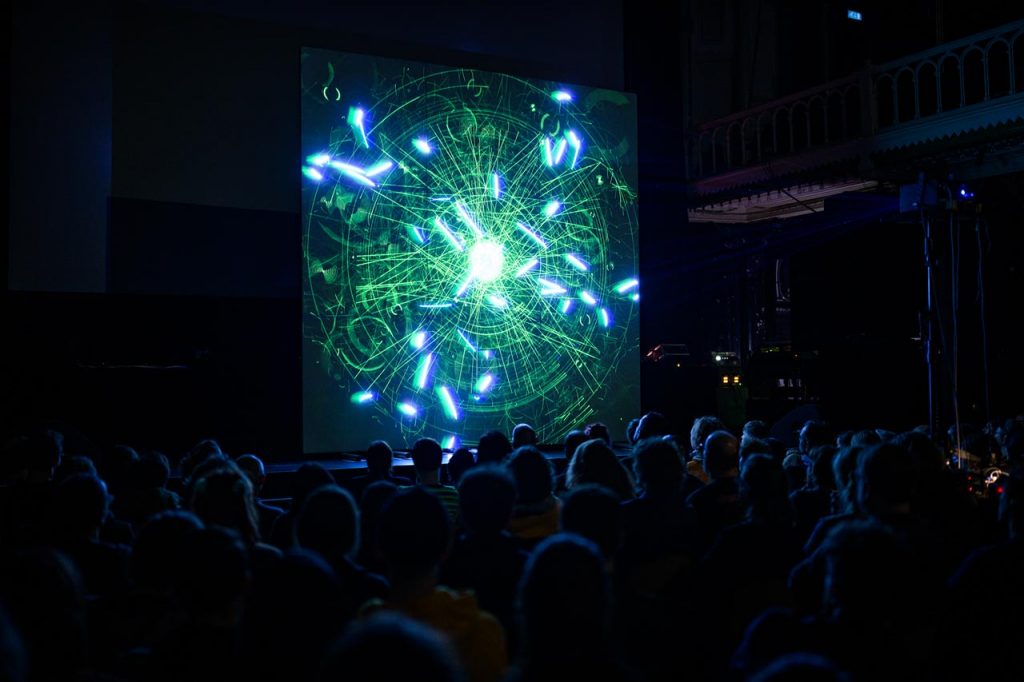
At Trøndelag Centre for Contemporary Art HC Gilje presents two installations that in different ways explore the fleeting borders between us and the other(s) and our experience of light and space. One of the installations is specifically made with the location and exhibition space in mind; Gilje uses the Art Centres large glass facade. Facing a busy street, the work consists of a series of surfaces that can be electrically switched on or off to make them either transparent or opaque. In effect it is possible to experience the intallation both from the inside and the outside of the gallery space at any given moment. By changing the surfaces so that they alter between being transparent and opaque, movements emerges and keeps the space in a constant flux of opening and closing our visual access to the inside and outside. The surfaces transforms our experience of the space, they both reveal and hide and makes the installation act as a temporary border or divider, like a membrane with varying porosity.
The second installation, Radiant, uses a large laser device to create temporary light paintings. The laser sends a white beam of light across the gallery space and imprint lines and curves on an opposite wall, only visible for a short moment before they disappear. The wall is covered with phosphorescent pigment which captures light when the laser rays hits its surface, emitting a green shimmer that slowly fades away. Giving the installation the fitting name Radiant points to the layered laser-painted lines evolving into a glowing green web of shimmering shapes that are constantly overwritten. The relation between the always moving beam of light and the ability of the surface to absorb and emit light creates a tension between the quick and the slow, the present moment in contrast to longer stretches of time, and between what is built up and what is broken down.
Both the phosphorescent pigment used on the wall surface (made from rare earth minerals) and the laser projector are light sources that can be explained by quantum theory: electrons absorbing or releasing photons and thereby changing energy state. Einstein predicted the creation of laser (Light Amplification by Stimulated Emission of Radiation), a light source brighter than the sun, which eventually appeared in 1960 and is now ubiquitous. Unlike other light sources the laser has the unique quality of temporal and spatial coherence, resulting among other things in a monochrome narrow beam of light which stays narrow over distance.
Radiant Live was first commissioned by Sonic Acts (2019, Amsterdam). Additional sound programming is made by David Kiers. HC Giljes exhibition is supported by The Relief Fund for Visual Artists Production grant (BKHs delegerte tildelinger) and Arts Council Norway.
 H. C. Gilje
H. C. Gilje
As an artist HC Gilje’s (b. 1969) main interest is to explore the visual and optical effects when movement of light interacts with physical structures. When light passes through architectural spaces, physical objects, bodies and landscapes, the movements of the light affects the experience of time elapsing. Gilje has developed tools and mechanical devices that act as instruments, mediators, probes or interfaces to inflict these types of movements from the light and to create interactions with its surroundings.
For over a decade Gilje has explored how ephemeral media – sound, projections, light and movement – can change and activate a space. After finishing his art degree from the intermedia department at the Academy of Fine Arts in Trondheim in 1999, and receiving a residency at Künstlerhaus Bethanien, Gilje moved to Berlin. Being a key figure in the live cinema scene from around 2000 he toured extensively throughout the world, while at the same time creating experimental videos presented at various film, art and festival venues. Gilje was active with 242.pilots, a live video improvisation ensemble, and various other constellations like the dance company Kreutzerkompani (2000–2006) together with choreographer Eva Cecilie Richardsen. In 2006 he moved back to Norway and started working with real time environments, installations, live performance, set design and experimental video.
His recent solo exhibitions include Stereolux (2019), ANX (2018), Kunsthall Grenland (2018), Rake Art Space (2016), Kristiansand Kunsthall (2016) and Woodstreet Galleries in Pittsburgh (2012 and 2015). HC Gilje has participated extensively on international festivals, for instance Sonic Acts in Amsterdam (2010, 2013 and 2017) and LIAF (2013). He joined the project Dark Ecology (2015–17) creating a video installation, a light installation, a live performance and a vertical cinema film. He has also participated
in several group exhibitions, at for instance Skulpturbiennalen (2015–16), Babel Art Space (2014), ZHM in Karlsruhe (2013) and Museum for Contemporary art in Roskilde (2008 and 2010). In 2017 Gilje published the book Conversations with spaces through the publisher uten tittel.
Photo: Pieter Kers
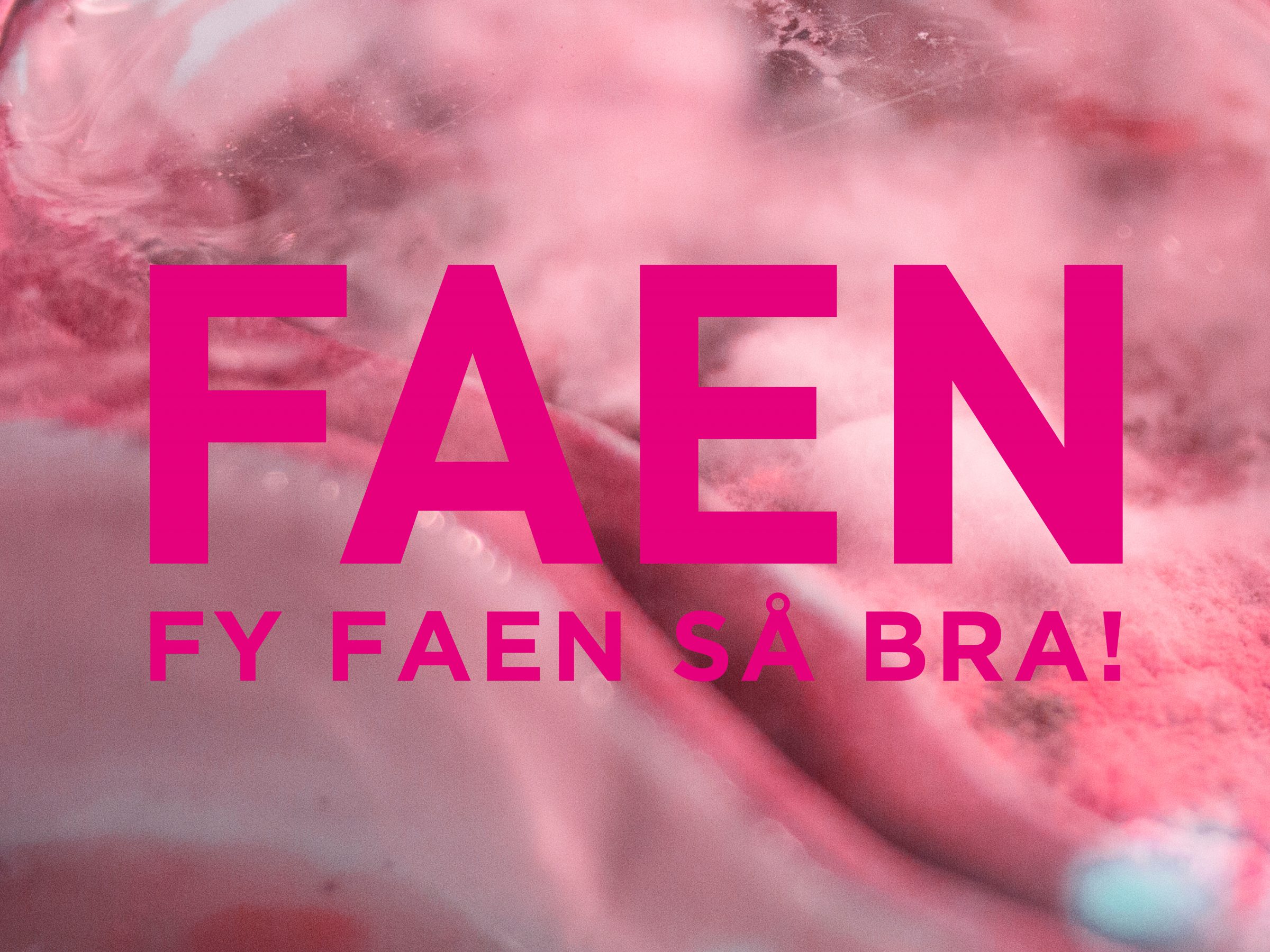
GROUP EXHIBITION / GALLERY KiT, March 8 – 22, 2020 ///
ANNE CECILIE LIE / ANNIKE FLO / RENATE S. HANDAL / UNNUR A. EINARSDOTTIR
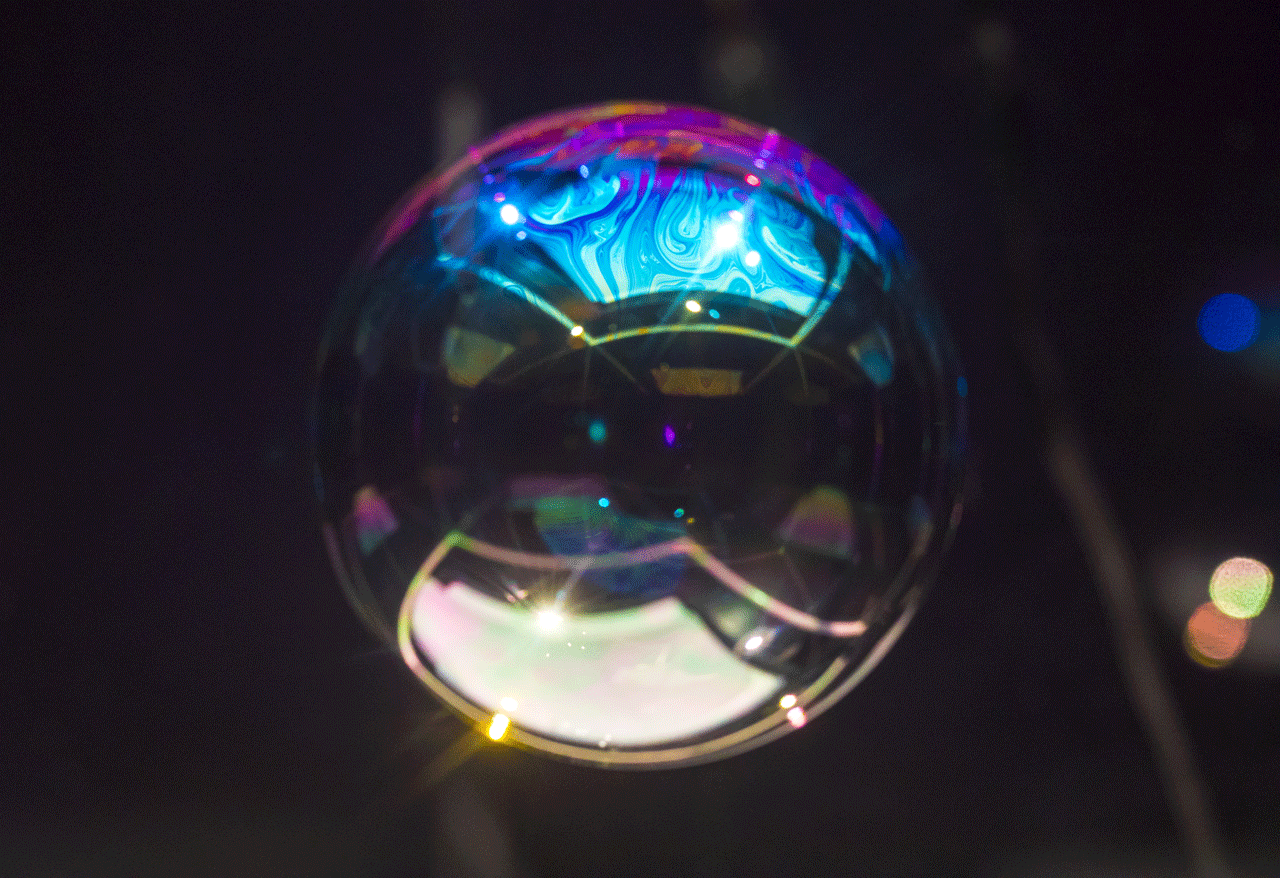
INSTALLATION / VITENSENTERET I TRONDHEIM, March 8 – May 3, 2020
Opening March 8 @ 12:00 / Opening hours: Mon – Fri 10:00 – 16:00 / Sat – Sun 11:00 – 17:00
Curator: Espen Gangvik
VERENA FRIEDRICH [de]
THE LONG NOW
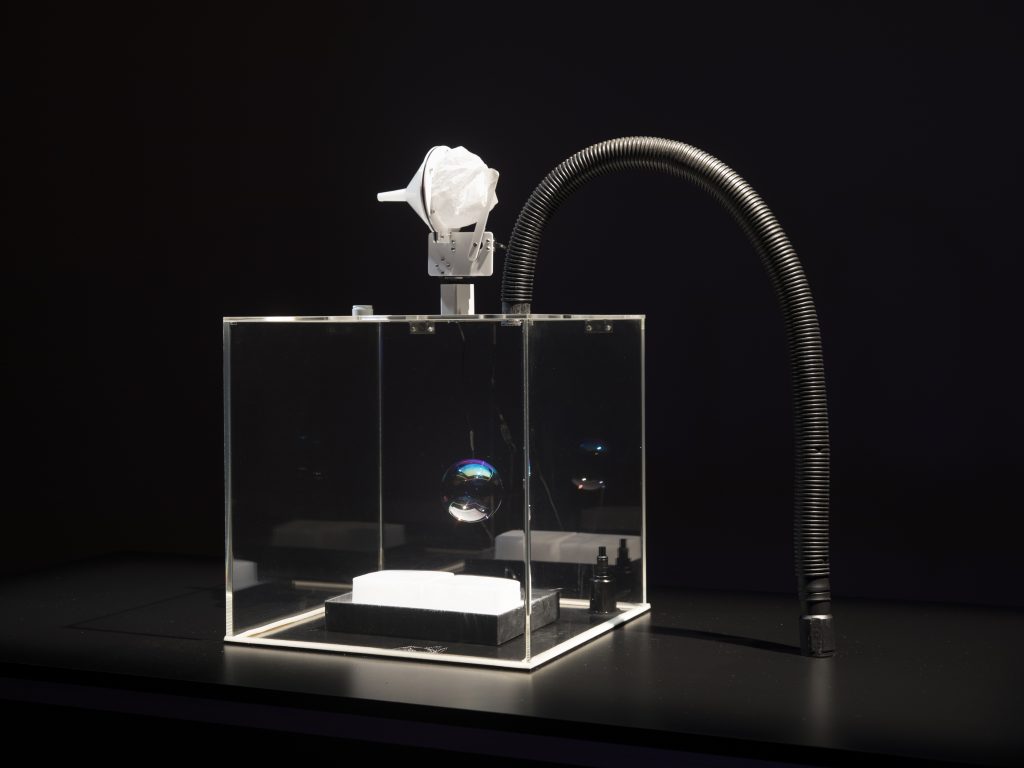
Photo: Kristof Vrancken
A soap bubble usually remains stable for only a few moments – it is a perfectly formed sphere with an iridescent surface that reflects its surroundings. However, due to the force of gravity and the thinning of the membrane it bursts after a few seconds and is irretrievably lost. As one of the classical vanitas symbols the soap bubble traditionally stands for the transience of the moment and the fragility of life.
THE LONG NOW approaches the soap bubble from a contemporary perspective – with reference to its chemical and physical properties as well as recent scientific and technological developments.
THE LONG NOW is aimed at extending the lifespan of a soap bubble, to preserve it forever if possible. Using an improved formula, a machine generates a bubble, sends it to a chamber with a controlled atmosphere and keeps it there in suspension for as long as possible. The project is presented in the form of an experimental set-up in which the newly created soap bubble oscillates permanently between fragility and stability.
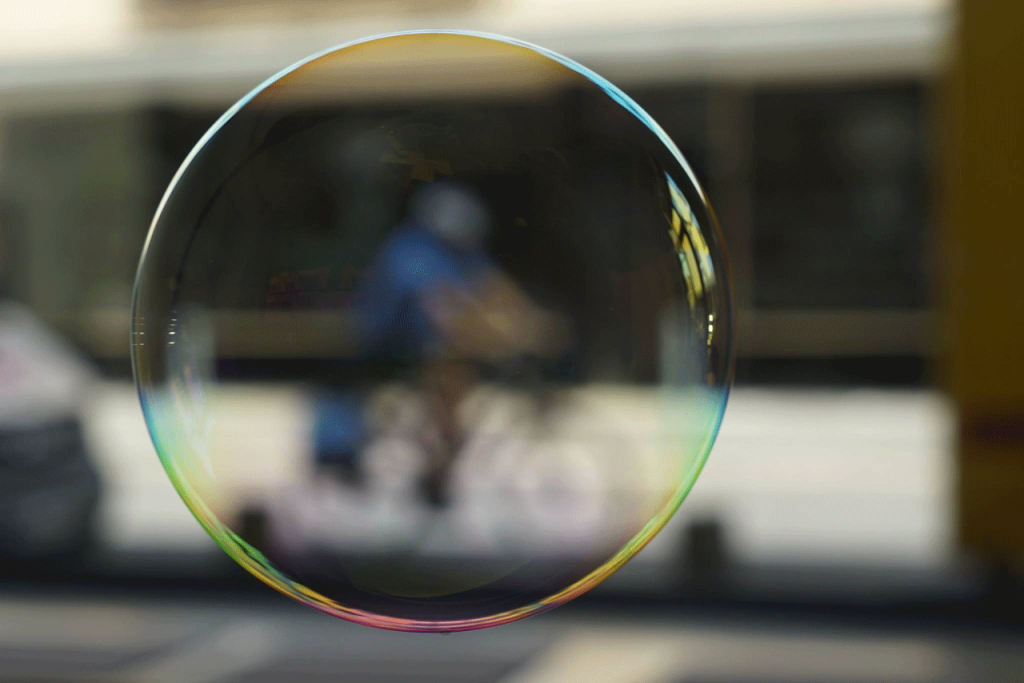
Photo: Max Pauer
CREDITS:
Realised within the framework of EMARE Move On at OBORO’s New Media Lab and a residency at Rustines|Lab, Perte de Signal, both in Montréal, Canada. With support of the Culture Programme of the European Commission, the Goethe Institut, the Conseil des arts et des lettres du Québec and FACT.
Header image: Kristof Vrancken
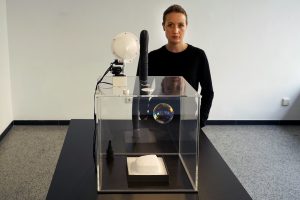 Verena Friedrich is an artist creating time-based installations in which organic, electronic and sculptural media come into play. She was an artist in residence i. a. at “SymbioticA – Centre of Excellence in Biological Arts” at the University of Western Australia and at the Max Planck Institute for Biology of Ageing Cologne in Germany.
Verena Friedrich is an artist creating time-based installations in which organic, electronic and sculptural media come into play. She was an artist in residence i. a. at “SymbioticA – Centre of Excellence in Biological Arts” at the University of Western Australia and at the Max Planck Institute for Biology of Ageing Cologne in Germany.
Verena Friedrich ́s projects have been presented internationally in the context of exhibitions, media art festivals and conferences. She received the International Media Award for Science and Art from ZKM Karlsruhe 2005; a special mention in the VIDA 13.2 Art & Artificial Life Awards; an honorary mention in the Prix Ars Electronica 2015; a jury mention in the Japan Media Arts Festival 2015 and the Transitio_MX award in 2017.
In recent years she has been teaching at the University of Art and Design Offenbach and the Bauhaus University Weimar, both in Germany. Currently she’s an assistant professor and co-heading the ‘exMedia Lab’ at the Academy of Media Arts Cologne, Germany.
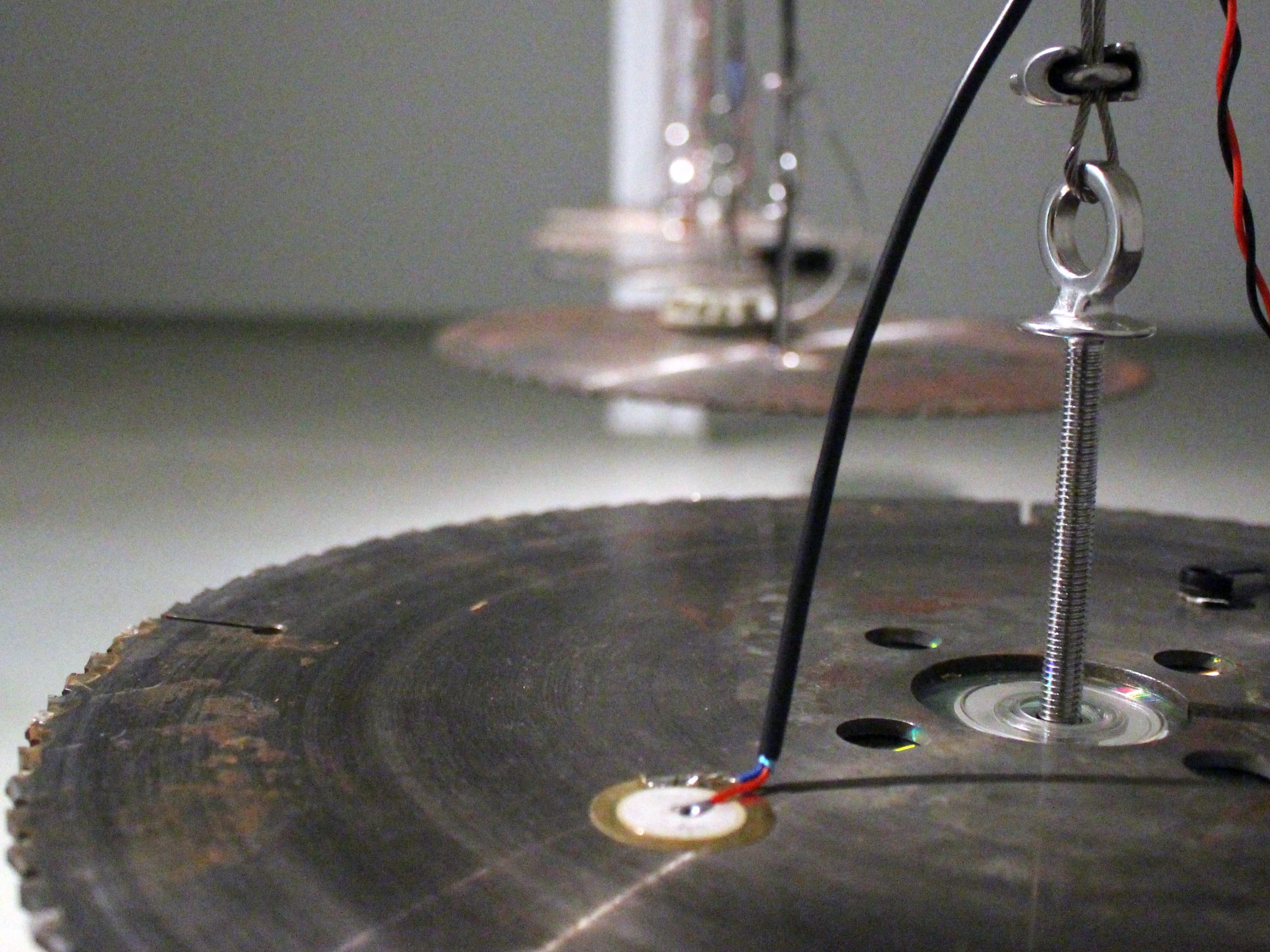
SOLO EXHIBITION @ TEKS.studio / September 26 – October 25, 2020
Curator: Espen Gangvik
EIRIK HAVNES [no]
THE AGREEMENT
THE AGREEMENT is a part of Havnes’ series of feedback themed installations, where every installation uses feedback both as a sound source, and as a representation of different processes within our surrounding world..
This time it is the echo chamber that is thematized, and how we change opinions based on who we talk to, or how we through social media, or social situations, often are presented with opinions we already hold.
Every saw blade is mounted with a contact speaker and a contact microphone, closing a feedback circle that makes the blade vibrate with it’s own resonance frequency. When several of these saw blades are connected in different constellations, in different “conversations” so to speak, they constantly try to find frequencies they all can agree on, new tones they have in common.
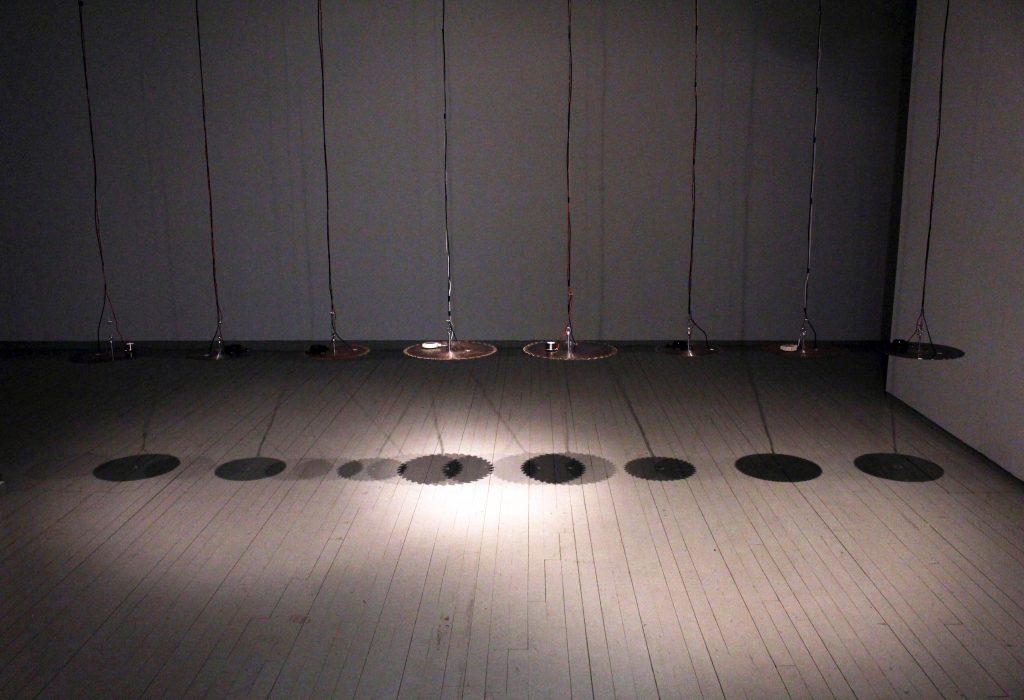
Photo by courtesy of the artist
Eirik Havnes (b.1989)
Eirik Havnes is an artist, composer, musician and poet from Ålesund, with a background from Music Technology at NTNU in Trondheim.
He focuses on producing sound on the fringe of genres and technical barriers, with a playful approach to conceptuality and perception.
Feedback has been in the centre of his works for a long time, both as a concept and as a sound source; incorporating both into his installations and musical works. The same can be said about his use of sonification; the art of translating data or concepts into sound, to give the audience a different and auditive perspective on the subject in matter. Havnes has exhibited in arenas such as Trøndelag Senter for Samtidskunst, Bomuldsfabriken, Heimdal Kunstforening, Høstscena, Lydgalleriet, Meta.Morf (2014) and have released a number of records. Most recently, he has been the subject of the documentary Polyfonatura (2019), where director Jon Vatne has been following Havnes over the course of 4 years, while he is composing a cinematic score solely based on field recordings.
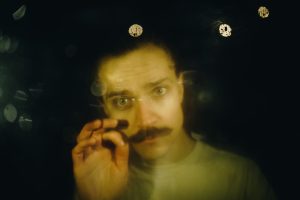
Photo: Odin Jæger, VG
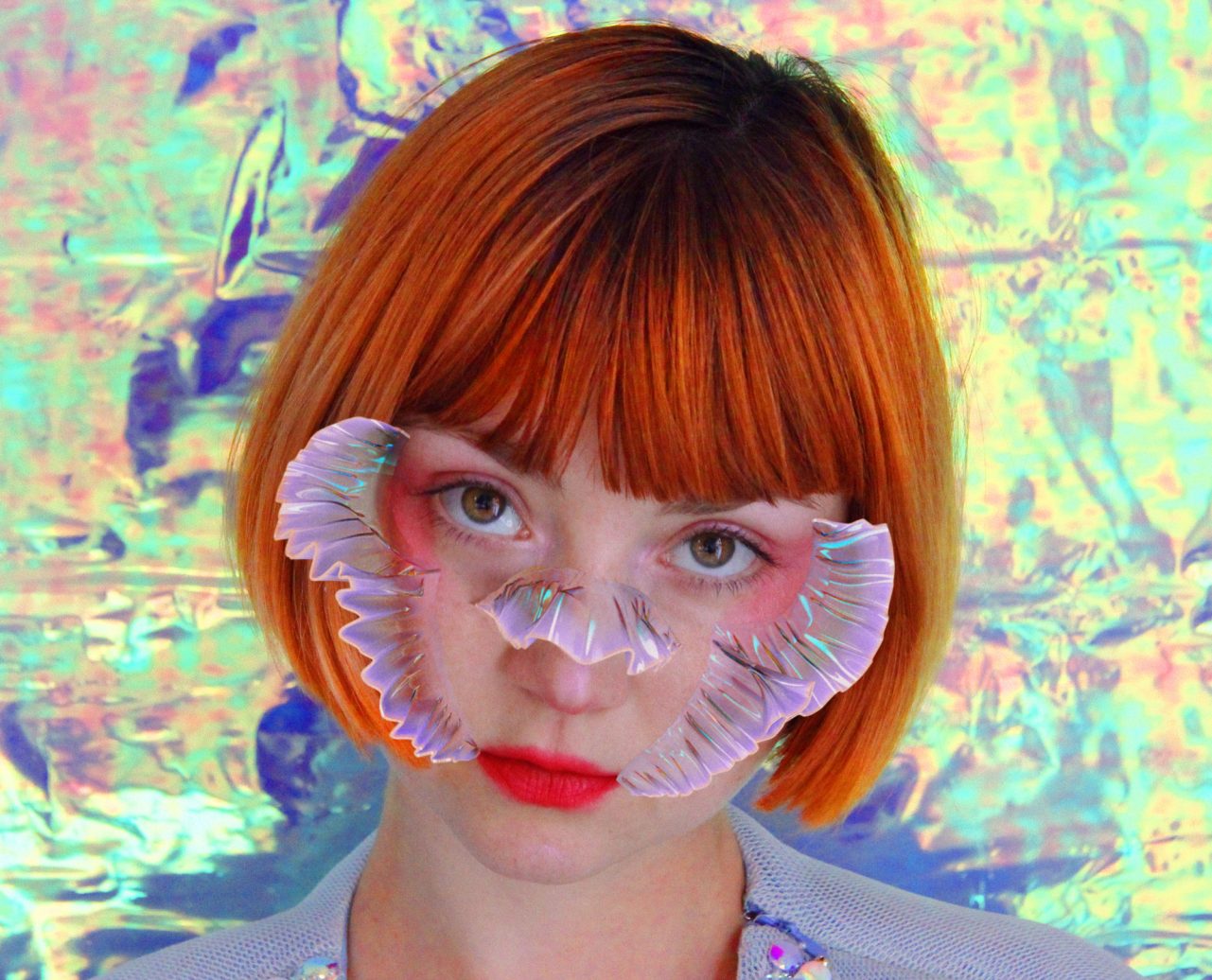
SOLO EXHIBITION / POP-UP @ TRONDHEIM TORG September 18 – 19 / NORDENFJELDSKE KUNSTINDUSTRIMUSEUM, September 22 – November 1, 2020 / Curator: Steffen Wesselvold Holden
INES ALPHA [fr]
VIRTUAL JEWELLERY AND 3D MAKEUP
In today’s, and more importantly tomorrow’s society, people will express an ever-expanding desire to transform themselves. The illusions are everywhere. Using automated social media filters, advanced makeup technics or plastic surgery. I consider my work to be an exaggeration of that worldwide trend and I’m trying to imagine what an absolute aesthetic freedom of one’s appearance would look like. This is why my goal is to encourage a fun and creative approach to makeup and self-expression. We need to de-dramatize beauty. I love collaborating with people who inspire me. To me, there is nothing better in this world than finding the right artistic connections. Uniting different skills, styles and backgrounds. Their visual universe and their faces and features inspire me. The way they dress and present themselves to the world, sometimes it’s their beauty, sometimes it’s something I really can’t explain. My dream is to develop an app where everyone can wear my 3D makeups in the most realistic way. I truly looking forward to the day where we will all be wearing contact lenses to see an augmented world with our own eyes.
At present the “3D makeup series” constitutes Ines Alpha’s main body of work, where she pushes the boundaries of makeup, working on “digitalised” bodies, allowing for more freedom with the concepts of beauty.
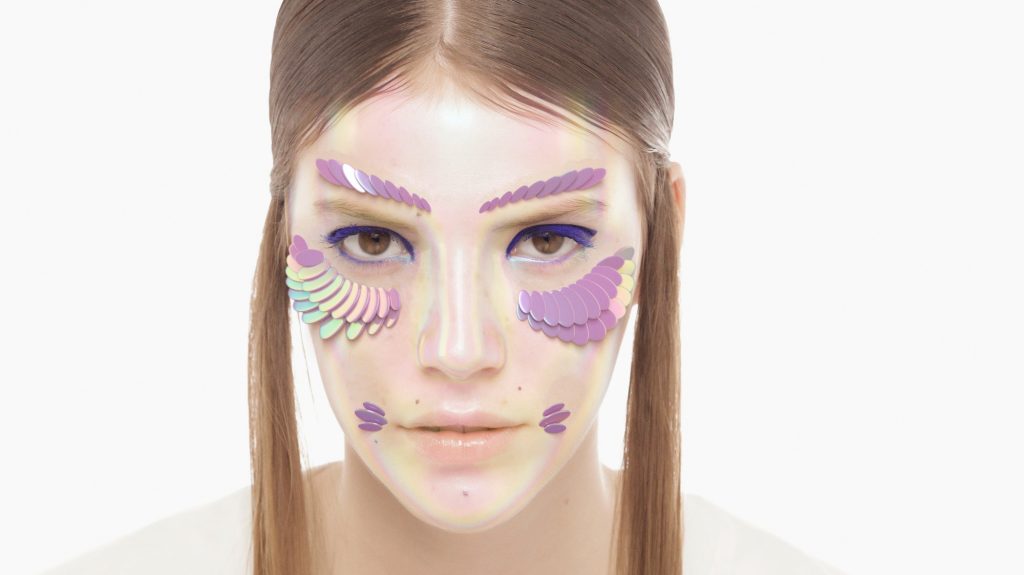
Ines Alpha (b. 1985) is a 3D artist based in Paris. She started experiencing with 3D while working as an art director in advertising, specialised in beauty and luxury. Her first encounters with 3D was when she started making mock-ups for HD still lives and cosmetics. Through this process she also discovered the boundaries of CGI and the limitless possibilities in the technology. She enrolled into several learning programs and learned 3D through video tutorials on how to make organic iridescent blobs and weird creatures. The result of this autodidactic apprenticeship was the unification of 3D and makeup.
Her first notable 3D work was the “Baby F-16″ videoclip, an AR experiment she made with the artist Panteros666. Their next collaboration was the music video “Clear,” featuring Woodkid. In their last project, “Meteociel,” which is an experimental travel vlog, they have envisioned unexpected encounters with a digital pet. Amongst her recent collaborators we can find Lil Miquela (virtual influencer), Munroe Bergdorf (model, activist), Asung Ko (actress), Melovemealot or MLAM (artist, MUA), Sheidlina (artist, model), Yelle (music), Salvia (make-up artist/ performer), Charlotte Free (Chanel model), Roy Woods (music) and Tiggy Thorn (MUA, artist, club kid).
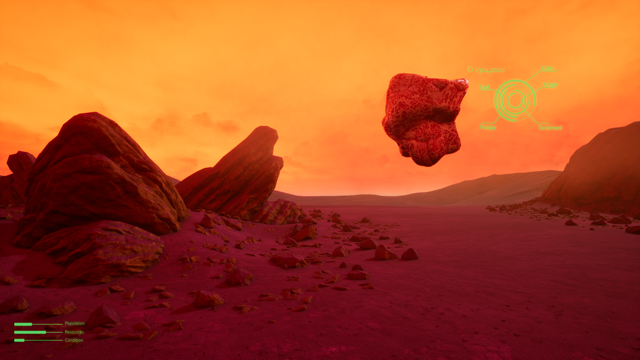
SOLO EXHIBITION @ BABEL VISNINGSROM FOR KUNST / October 2 – 18, 2020 /
Curator: Lena Katrine Sokki
MARTINUS SUIJKERBUIJK [nl]
PATER_NOSTER_2020
The project Pater_Noster_2020 displays a network of algorithms and media that gives a comprehensive look of what goes on behind the extractive processes and production of ‘Big Data’. The main elements of the spatial multi-media installation Pater_Noster_2020 are two generative real-time animations. The first is a morphing portrait comprised of the visitors of the exhibition. The second is an agent based simulation (ABS) consisting of interacting artificial intelligence agents (blobs), that are generated through extracted emotional profiles from the visitors.
In advance of the exhibition a dataset is collected and labelled by scraping algorithms and collecting ‘in the wild’. Also during the exhibition the emotional state of the visitor will be collected.
Upon entering the exhibition the portrait of the visitor will be captured through facial recognition. From the collected portraits an emotional profile is generated through a facial expression recognition algorithm, but with full integrity to the anonymity of the subjects encountered. Only their emotional profile is captured and not their identity.
The extracted emotional profiles are processed through two channels in the installation. In the first channel every profile is converted to a behaviour tree for one of the blob and imported in a bespoke virtual world. Each blob has a distinct behavioural profile and appearance. These characteristics are determined by each individual profile captured from the visitor. How the blobs respond to each other depends on the emotional states collected from the visitor of the exhibition.
In the second channel all the collected portraits transpose, and accumulate into a real-time animation of a portrait called the Demiurge. The Demiurge is a concept in Platonic philosophy as the creator of the physical world. The figure in the animation is generated through a generative adversarial network (GAN). The latter is a form of deep learning that makes it possible to ‘shape- shift’ between different faces.
This animation is played in a continuous loop that morphs between all captured portraits in a new fluid identity and is complimented with a generative soundscape.
The project has become involved with what Shoshanna Zuboff has called ‘surveillance capitalism’: a new stage of capitalism where the accumulation of wealth has been directed to human behaviour and experience as a raw material to generate profits. The algorithmic processes operating in the installation expose the effective idea of consumer profiling: the reduction of real world complexity i.e. human behaviour to tractable (consumer) data patterns. It shows that when life itself is reduced to a parametric space, it becomes susceptible to control and manipulation.
Furthermore, the feedback loop between individual (the Demiurge) and community (Blobs) gives us a warning of what ‘social’ media cultivates: an attention economy where a fool’s opinion can take on mythological proportions.
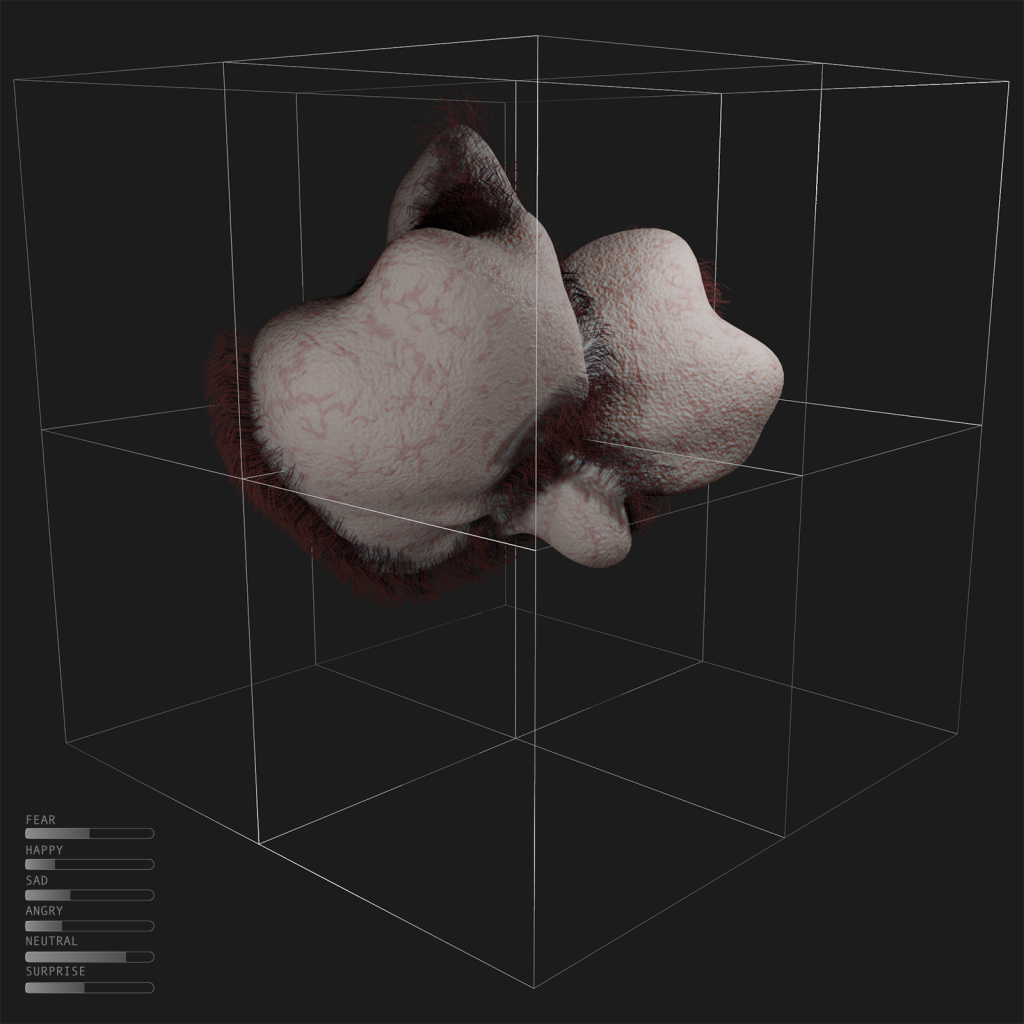

Photo: Hiske Athena
Martinus Suijkerbuijk’s diverse background forms the blueprint of his artistic practice. He holds a degree in Automation Engineering and Industrial Design. In 2017 he graduated from the International MFA program at the Trondheim Academy of Fine Arts where he also recently started his PhD.
His work is best understood as an experimental practice that connects, translates and operates across the borders of different media, artistic genres and disciplines.
Within his practice he continues to explore the fringes of art, technology and philosophy and probes new terrains for intersection within the potential of alliances and collaborations.
His focus on artificial intelligence accelerated during his MFA and together with his technical background has enabled him to work across industries. He has been invited to present his research and work at art institutions as well as technology conferences (CHI 2018). Moreover, parallel to his art practice he has maintained a freelance career consulting creative agencies on the potentials and pitfalls of digital technologies.
Presently his artistic research revolves around the topic of Critical Data Collection that probes novel ways of data collection to build solid digital- infrastructures for the future.

SOLO EXHIBITION @ TRØNDELAG SENTER FOR SAMTIDSKUNST / September 24 – November 1, 2020 / Curators: Lars Skjelbreia, Tovelise Røkke-Olsen, Randi Martine Brockmann
ANNIKA BORG [no/se]
PUNKT.KONTINUUM
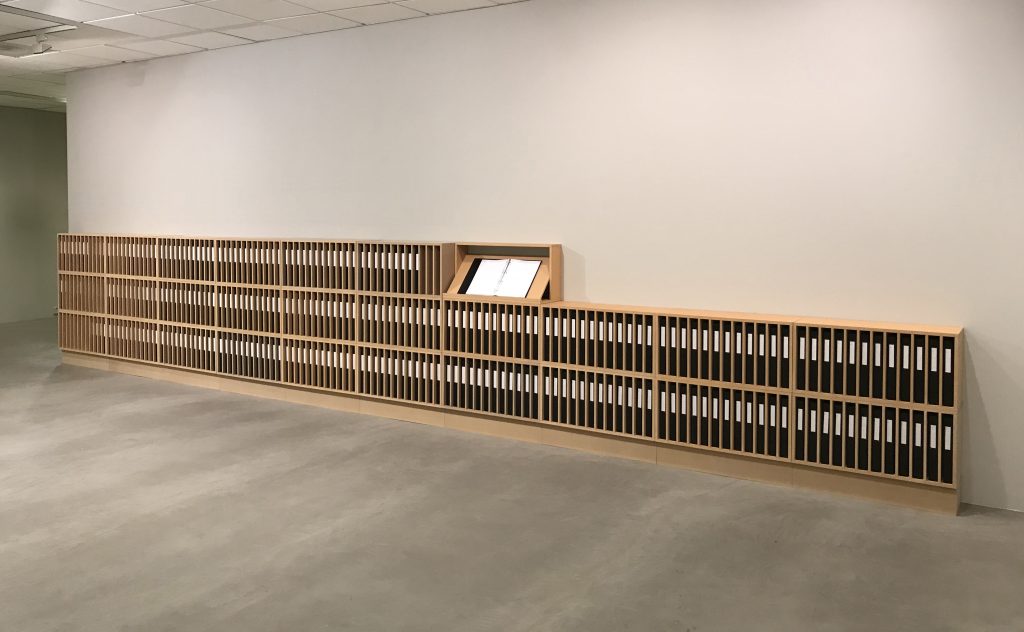
In the exhibition ”punkt.kontinuum” (point.continuum) at Trøndelag Centre for Contemporary Art the Norwegian conceptual artist Annika Borg presents her lifework “one and one hundred dice rolls a day” – a project that has spanned the course of 25 years. It began in September 1994, while Borg was a student at the art academy, and for the past two and a half decades she has rolled a set of six dice simultaneously, 101 times every day.
The dice is a small object that represents coincidence by generating random numbers. This element of chance is combined with a specific set of rules. Borg has, like most conceptual artists in the 1960s, outlined a fixed instruction for how the project is to be carried out: “Every day a set of six dice are rolled. Once each morning, followed by one hundred times later the same day. For every dice roll the combination of numbers is written down. Every dice is marked and has its fixed place in the order.” The numerical combinations that unfolds are gathered in a steadily growing archive: one post a day, one bound volume a month, one section of a shelf per year. The exhibition presents what with time has become a large installation of this material.
Inspired by the eye of the dice, the dot became the first shape that the material was translated into. The dot usually marks a conclusion, often at the end of an sentence, but in this case it also marks a continuation: When a set of six dice are rolled one hundred and one times the possible outcome of combinations are almost endless – mathematically the project would generate 46.656 unique variations of the first dice roll as a singular throw. The number of unique variations of the next hundred throws as a group is in comparison higher than the number of grains of sand on earth and higher that the number of stars in the universe. Borg engages in dialogue with these random numbers, with different sets of forms and rules, and this simple yet complex visual language has shown to be capable of bringing life into the abstract numerical material. This way of constructing and transforming numbers aims to make us reflect upon coincidences and systems, time, extent and variation, which are active elements in all forms of nature.
In addition to the dot, Borg’s visual language has so far taken the shape of straight lines, wavelines and semicircles; all represented in this exhibition. To accurately preserve the distinctiveness of the material she uses a digital working method in the processes of translating the numbers. Although the finished work does not always end up in a digital form, her sketches are always carried out digitally. Most of the time, there is no programming involved, but a manual placement of elements in a vector based program according to the numbers from the dice – a process Borg herself calls digital handicraft. This method gives her ample time to get to know her material in a very close and specific manner and create artworks that presents the uniqueness of the numeric material.
Through drawing, animation, sculpture and sound, Borg presents different approaches to explore the inherent nature of this unique and random material. With a scientific approach she has dived into the world of numbers and randomness. She has gathered data, made observations, and undergone precise experiences. Through this process she has steadily developed a stronger feeling for and understanding of the uniqueness of her material and what is latent in it. At the same time her method also resembles an extended performance in which dedication, ritual, and duration come into play. The fascination for the project and numbers are connected to time and a commitment to art – because it provides meaning, if not in the form of language then in the shape of experience.
The chosen title for the exhibition indicates that reaching 25 years of the project is only a point in a continuing journey heading for an infinite future. Given the project’s duration and immersion, her approach can almost be seen as an alternative model for science and other processes in the unfolding of society: she shows us that long-term perspectives are in fact possible.
Annika Borg/ punkt.kontinuum is supported by Government Grants for Artists, The Cultural Fund, The Audio and Visual Fund, Trondheim Municipality, Regional Production Support and The Relief Fund for Visual Artists Production grant (BKHs delegerte tildelinger).
 Annika Borg (b. 1964, Stockholm) is a visual artist based in Trondheim. She graduated from Trondheim Academy of Fine Art in 1996. Her key method of work is process based and places itself within a conceptual framework with a methodology consisting of action, collection, transformation and visualization. Her artistic material is numbers collected from the action of rolling a set of six dice every day. This has gradually become a large body of numeric material, which in turn has resulted in several sub-projects where the numbers are transformed into various visual forms and expressions.
Annika Borg (b. 1964, Stockholm) is a visual artist based in Trondheim. She graduated from Trondheim Academy of Fine Art in 1996. Her key method of work is process based and places itself within a conceptual framework with a methodology consisting of action, collection, transformation and visualization. Her artistic material is numbers collected from the action of rolling a set of six dice every day. This has gradually become a large body of numeric material, which in turn has resulted in several sub-projects where the numbers are transformed into various visual forms and expressions.
Throughout the last three decades she has participated in several group exhibitions and her work is included in public art collections. Trondheim Kunstmuseum presented her solo exhibition “Circle Incidents” in 2012. Borg has played an active role in the local arts community through numerous positions and was a founding member of the artist run space trans-art (2000–2003). She has received multiple public art commissions in educational buildings as well as an outdoor project in Ravelsveita in the centre of Trondheim. In 2016–2018 Borg was a resident at Tempe studios in Trondheim. In the fall of 2019 she presented the first edition of the “punkt.kontinuum” (point.continuum) at North Norwegian Art Centre at Svolvær as a celebration of the project’s 25th anniversary.
Photos courtesy of the artist.
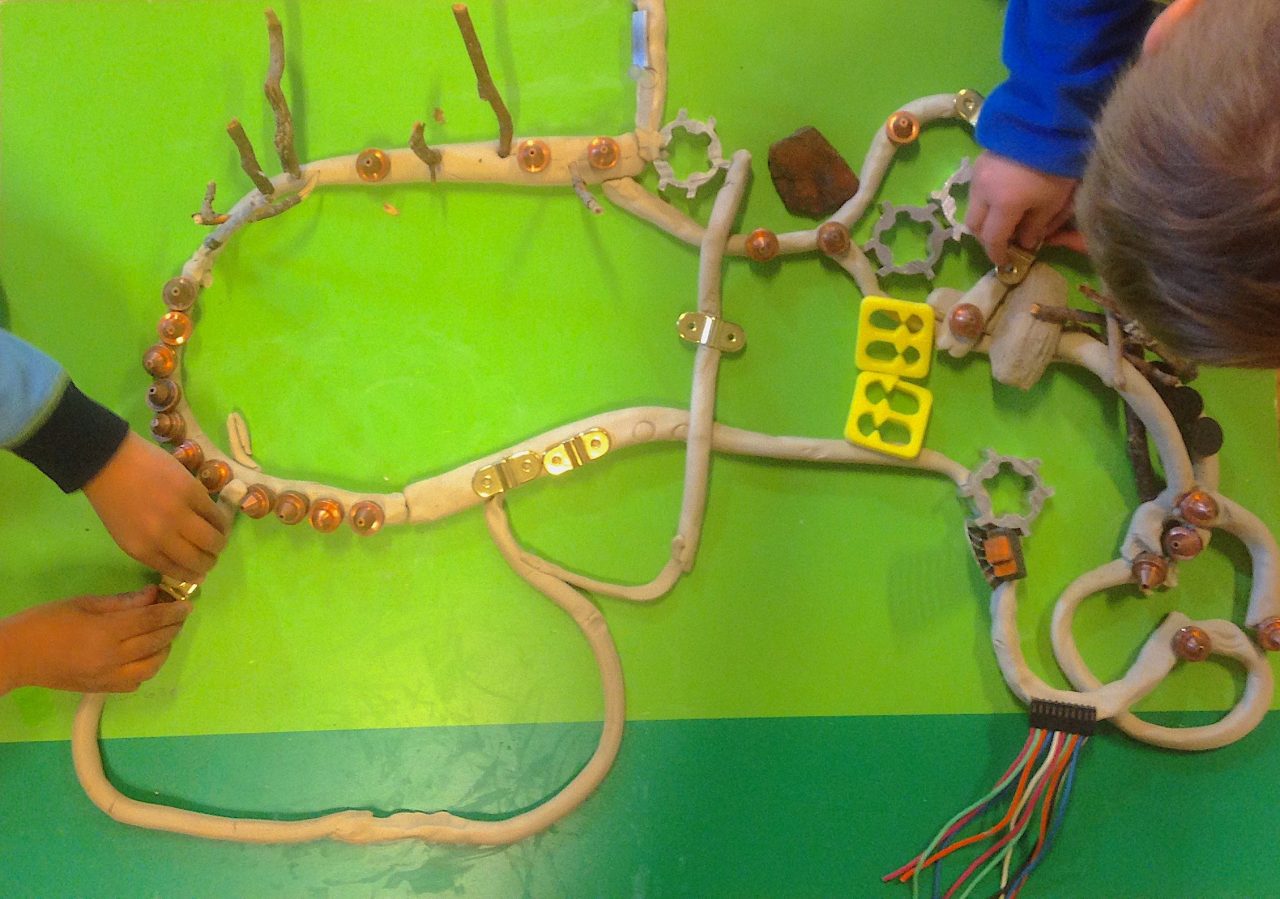
ReMida Trondheim / Olavshallen, October 31 – November 1 & November 7 – 8 / Curator: Pål Bøyesen
SPILLETS REGLER [THE RULES OF THE GAME]
Fairytales are older than books, and today digital gaming is the main intermediary of the eternal battle between the good and the bad. Still, the structure of computer games mostly entail the same kind of dramaturgy as present in the old stories; stereotypical characters loose themselves in different mazes where they have to overcome various dangers in order to receive rewards in the other end.
To limit screen time, kindergartens and schools are setting up time rules. As a consequence a reverse strategy emerge among children, going from digital to analog, where i.e. the world of Pokèmon Go are physical built and while playing become the basis for interaction and creative problem solving.
ReMida – Center for Creative Reuse – will invite groups of children to a central metamorphic space during Meta.Morf 2020 for building an analog game world by the use of recycled materi- als, showing our eternal creative urge to play, breaking the rules and invent new and exciting perspectives.